CONTENTS
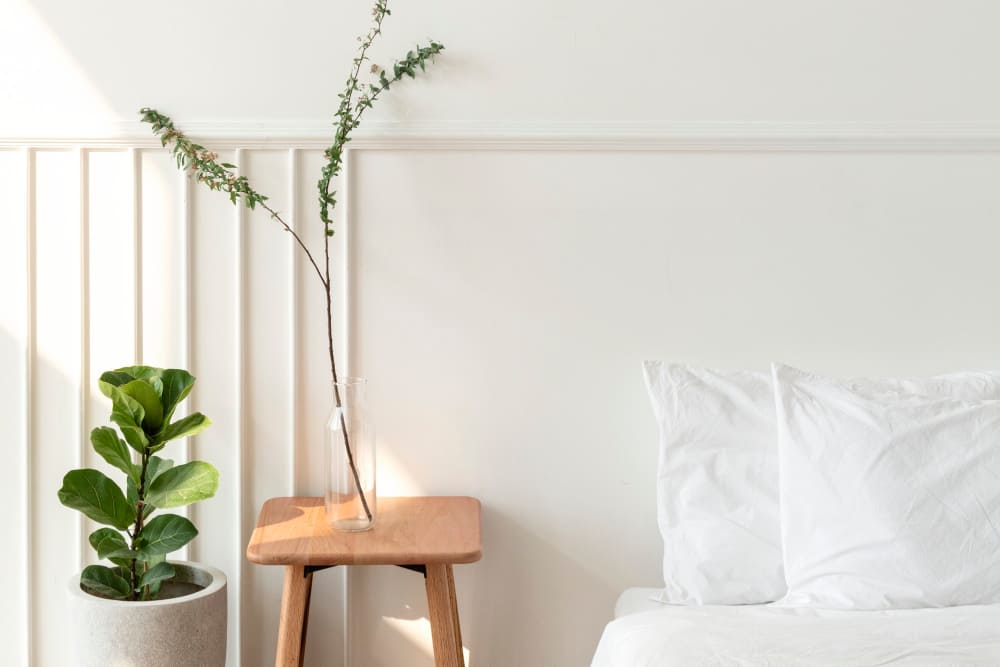
Effortless Style and Functionality: Introducing Murphy Beds for Every Home
Picture this: you wake up in the morning, stretch your arms and legs, and look around your bedroom. You may be surprised that there’s enough space for you to do a cartwheel, but it’s so cluttered with furniture that you can barely move. Familiar with the prompt?
We have the solution you’ve been looking for: Murphy beds! These innovative pieces of furniture are the perfect combination of comfort and convenience. Interested in getting one? Check out our tips below to get started!
Buying Considerations for Murphy Beds
While buying your own Murphy beds, you can’t just pick one randomly and go for it; you need to have some considerations. Here are our tips!
Material
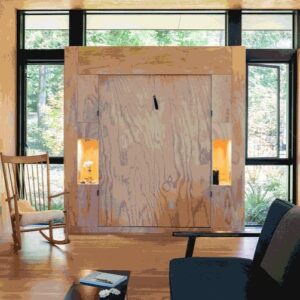
The first and foremost consideration in buying Murphy beds is the material. Common materials for Murphy Beds include wood, metal, and composite materials.
Wood is popular for those who want a classic and timeless look, while metal is often preferred for its modern and sleek appearance. Composite materials are a great option for those who want the look of wood without the cost or maintenance requirements.
Whichever material you choose later on, ensure it is of the best quality and resistant to wear and tear.
Room Layout
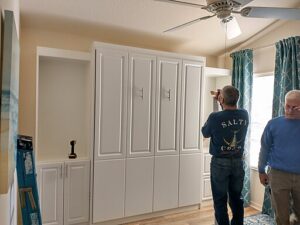
The size and shape of your room will play a significant role in determining which Murphy bed type will work best for you.
For example, if you have a small bedroom with limited floor space, a vertical Murphy Bed may be the best option as it can be easily tucked away against the wall, leaving more space for other furniture.
On the other hand, if your room has high ceilings and ample floor space, a horizontal Murphy Bed may be a better option, as it can provide a larger sleeping area without taking up too much wall space.
It’s also important to consider the room’s placement of windows, doors, and other furniture. You’ll want to ensure your bed allows easy access and doesn’t interfere with the room’s flow.
Features

Murphy beds come in various sizes and shapes with different features. These features include anything from storage options to lighting and even integrated technology.
For example, some Murphy beds may have built-in shelving or drawers, providing extra storage space for linens, clothes, or other items. Others may feature integrated lighting, allowing you to read or work in bed without disturbing your partner.
Some high-tech models even come with built-in outlets and USB ports, making it effortless to charge your phone or laptop while you sleep.
Remember: choose the ones that cater to your needs and budget the most!
Opening Mechanism
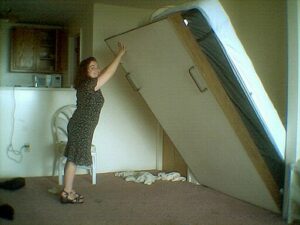
The opening mechanism refers to how the bed is folded up and stored when not in use and how it is opened up for sleeping.
Several different types of opening mechanisms are available for Murphy beds, each with its own benefits and drawbacks. Some common types include:
- Spring-loaded: This involves a spring-loaded bed frame released when you pull on a handle or strap. These beds are generally easy to operate but may require some effort to lift and lower.
- Piston-assisted: This mechanism uses gas pistons to help lift and lower the bed, making it much easier to operate than a spring-loaded mechanism. These beds tend to be more expensive but are well worth the investment for their ease of use.
- Electric: An electric Murphy bed can be operated with a button. These beds are the most expensive but ideal for those who want a fully automated experience.
Spring-loaded beds tend to be the most affordable but may require more effort, while piston-assisted and electric beds offer greater ease of use but come at a higher price point. So, choose wisely!
Styles of Murphy Beds
There are mainly two styles of Murphy beds: cabinet and wall bed. What are the differences? Read on!
Cabinet Bed
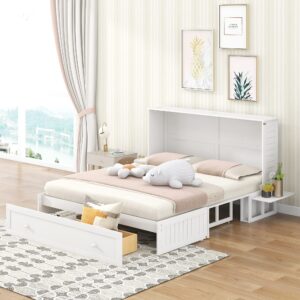
A cabinet bed is designed to look like a cabinet or chest of drawers when not in use. Made from wood in various finishes and styles, it’s a great option for those who want to keep their sleeping area hidden away.
This type of Murphy bed is compact and easy to operate, with most models simply requiring you to lift the base of the cabinet to reveal the bed. Perfect for small spaces, a cabinet bed offers both style and functionality while allowing you to maximize your living space.
Wall Bed
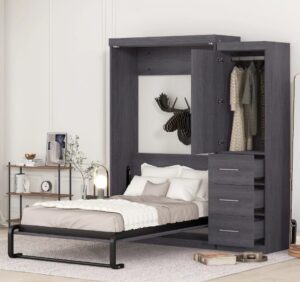
A wall bed, also known as a panel bed, pull-down bed, or fold-down bed, is designed to be stored vertically against the wall when not in use to maximize floor space during the day.
Wall beds come in various styles and are made from wood or metal, customizable with different finishes and hardware options to match your decor. They can be integrated into your existing room design and offer additional storage options like shelving or cabinets.
How to Choose a Murphy Bed
Essentially, there are two things in choosing a Murphy bed: the size and the default orientation.
Mattress Size
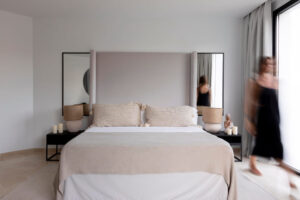
Are you living alone? Or are you sleeping with your couple? With different needs come different Murphy mattress sizes. Thankfully, Murphy beds are available in different sizes: twin bed size, queen size, and king size, depending on your space and sleeping needs.
A twin-size mattress is appropriate for a single person or child’s room, while a queen or king-size mattress is ideal for couples or those who need more sleeping space.
However, not all Murphy beds can accommodate all bed sizes, so reviewing the specifications before purchasing is important. Choosing the right mattress size ensures your bed is comfortable and functional.
Horizontal vs. Vertical

Choosing between a horizontal or vertical orientation is important when selecting the best Murphy bed.
A horizontal Murphy bed is wider and shorter, folding out from the side, making it ideal for rooms with limited wall space or low ceilings.
In contrast, the vertical one is taller and narrower, folding down from the top, making it more suitable for rooms with high ceilings or limited floor space.
The orientation can also affect the size of the mattress that can be accommodated, and some models are designed specifically for either a horizontal or vertical orientation.
Frequently Asked Questions
Why is it called a Murphy bed?
The term “Murphy bed” is derived from its inventor, William Lawrence Murphy. In the early 20th century, Murphy designed a space-saving bed that could be folded and stored vertically against a wall, allowing people to maximize limited space in small apartments or rooms.
Where should I install a Murphy bed?
A Murphy bed can be installed in various places, such as studio apartments, guest rooms, home offices, or multipurpose rooms. Consider the available space and room functionality when deciding on the installation location.
What are the upsides of a Murphy bed?
Murphy beds offer advantages such as space-saving, versatility, guest accommodation, customization options, convenience, and comfort.
Conclusion
In conclusion, Murphy beds are a stylish and functional solution for maximizing space without sacrificing comfort. Whether you have a small apartment, a guest room, or a home office, this bed type can provide the perfect solution.
With a range of sizes, orientations, and customization options, there is a Murphy Bed to suit every need and decor style. Your House Garden recommends investing in a Murphy Bed to transform your living space and create a versatile and functional environment that works for you.
So why wait? Consider adding a Murphy bed to your home right away and start enjoying the benefits of effortless style and functionality!

